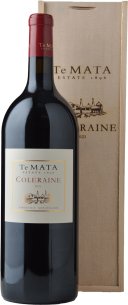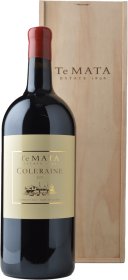Chateau Calon-Segur 3me cru classe
With its name enclosed in a heart on the label, Chateau Calon-Ségur is a third-growth estate (3ème Cru Classé) in Saint-Estèphe. Firm and sturdy in style, Chateau Calon-Ségur is somewhat austere in its youth, possessing a prominent tannin structure that rewards extended cellaring over 10 to 20 years.
CHATEAU SMITH-HAUT-LAFITTE Rouge Grand cru classe
Dating back over 800 years in the Bordeaux region, Chateau Smith Haut Lafitte is owned today by Daniel and Florence Cathiard. The estate also features a world class spa, which specialises in Vinotherapie - using grape extracts in many of their treatments. Up until the year 2000, the estate was not known for producing top quality wines, however in the capable hands of the Cathiard family and after over a decade of hard work and reinvention, the wines truly began to come into their own. It has been, in the words of Andrew Caillard, an astonishing ascendancy in the past 15 years, and given the sterling reviews the 2016 vintage has received, its trajectory seems set to continue its meteoric rise.
Inglenook Rubicon
Chateau Rauzan-Gassies 2me cru classe
Chateau Haut-Bailly Grand cru classe
While the estate known as Chateau Haut-Bailly dates back to 1461, its wine production began in 1530, falling into the hands of the de Leuvarde and Le Bailly families in 1630. It was purchased in 1998 by Robert G Wilmers, a Harvard-educated banker, and his French wife Elisabeth and under their care, the estate has begun producing some of the best wines in its history. The cellars and production procedures were renovated and modernised and this year, the Chateau itself was awarded government recognition of its cultural and vinious heritage. From some of the oldest vines in the region, the 2016 has been lauded as one of the Chateaus best, with Neal Martin hailing it as perhaps the best that I have tasted in almost 20 years of tasting at this estate.
Chateau Cos d'Estournel 2me cru classe
Majestic, intense, full bodied and tannic, Cos dEstournel is considered the leading wine of St Estèphe. Highly tannic in its youth, over time it develops much much like the great wines of adjoining Pauillac. The wine is typically a blend of 60% Cabernet Sauvignon, 38% Merlot and 2% Cabernet Franc, consistently displaying immense power and evident breed.
Houghton Jack Mann Cabernet Sauvignon
One word - legend. Jack Mann served Houghton for a remarkable 51 consecutive vintages. His determination to create wines of intensity, elegance and regional character have inspired a generation of Australian winemakers to achieve great things. Simply one of this country's greatest Cabernets, this wine is not just single vineyard fruit, the selection process is so rigorous that often it is just a few rows from the Justin Vineyard. Such is the reverence for that great man - Jack Mann.
Chateau Ducru-Beaucaillou 2me cru classe
Taking its name from its uniquely rocky terroir (beau caillou translates as beautiful stones), and Bertrand Ducru who purchased the estate in 1795, what we know today as Chateau Ducru Beaucaillou as a wine producing estate, has history stretches back to the 13th century. Owned today by The Borie family (who have long-standing roots of their own in Bordeaux), the Chateau is, according to many, producing the best wines in their history at this very moment. The 2016 vintage has already been hailed as yet another monumental success for the winery with Antonio Galloni praising it as simply magnificent.
Te Mata Estate Coleraine Cabernet Sauvignon Merlot Cabernet Franc
TE MATA ESTATE Coleraine. Cepage may include Cabernet Sauvignon, Merlot, and Cabernet Franc. Hawkes Bay, New Zealand
Yarra Yering Dry Red Wine No.1 Cabernets
Yarra Yering Dry Red Wine No.1 Yarra Valley Cabernet A feature of the Langton’s Classification since its 1990 inception, “No . 1” remains one of Australia’s most sought-after Bordeaux style blends. It is principally a Cabernet Sauvignon affair, with Merlot, Malbec and Petit Verdot playing supporting roles. Described as a “classic claret-style”, it features bright, blackcurrant fruit characters, savoury complexity and fine-grained tannins. Originally made by the late great Dr Bailey Carrodus, this flagship of the Yarra has been in the hands of Sarah Crowe (James Halliday’s 2016 Winemaker of the Year) since the 2013 vintage.


















